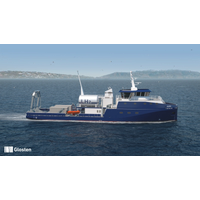
Glosten, Siemens Energy Select Key Equipment Vendors for World's First Hydrogen-hybrid Research Vessel
as they move forward with developing the details of this design.”According to Glosten, the company has for over sixty years supported Scripps with engineering and design work for their oceanographic research fleet, including the midlife refit of the R/V Roger Revelle, modifications to the R/V Sally Ride, Melville and New Horizon, and the design of the recently retired FLoating Instrument Platform (FLIP). In 2018, Glosten was contracted by Sandia National Laboratories to perform a feasibility study of a zero-emission, hydrogen-fuel-cell coastal research vessel. The Zero-V concept was developed
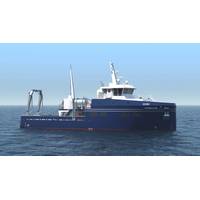
Glosten Tapped to Design Scripps' New Hydrogen-hybrid Research Vessel
U.S. Coast Guard approval of the design, the university will select the shipyard where the design will be constructed. Construction and detail design will likely take an additional three years.When completed, it will join the fleet of vessels managed by Scripps including the Navy-owned research vessels Sally Ride and Roger Revelle, which conduct global oceanographic research, and the Bob and Betty Beyster, a nearshore scientific workboat. All research vessels are stationed and maintained at the university’s Nimitz Marine Facility in Point Loma

Seamount Named for Iconic Oceanographer Walter Munk
at Scripps Oceanography. “It involved people at Scripps having a great idea, coming together, and having the resources to make it real.”Walter Munk (Photo: Scripps Institution of Oceanography)Researchers from Scripps Oceanography imaged the underwater mountain aboard Scripps research vessel Sally Ride just two months after Munk’s February 2019 death. Appelgate was one of several on campus who had sought ways to honor Munk. Appelgate says he had conversations with Munk, a renowned expert on waves and ocean physics, about seafloor features on occasion before Munk’s passing.“Walter
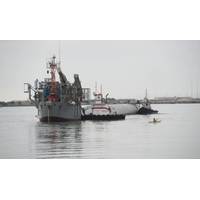
Eye on the Navy: Navy extends Life for Research Ships, but Says Farewell to FLIP
and scientists make new discoveries,” said Virginia Armbrust, professor and chair of the UW School of Oceanography, when the ship was returned to service following its overhaul.The Navy also has two Ocean-class oceanographic research ship, R/V Neil Armstrong (AGOR 27) (operated by WHOI) and R/V Sally Ride (AGOR 28) (operated by SIO) entered service in 2015 and 2016 respectively, as well as R/V Kilo Moana, which was delivered to the Navy in 2003 and is operated by the University of Hawai‘i Marine Center.In addition to the six Navy-owned oceanographic research vessels, Sparrock manages
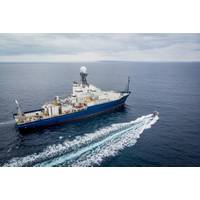
Ship Repair: Inside the $60m Refit of RV Roger Revelle
, as when the ship was built it included a broad diversity of equipment and manufacturers, which ultimately made the ship more difficult (and costly) to service. “Our goal here was to simplify everything in common off-the-shelf equipment,” and it was able to use experience building the RV Sally Ride five years ago to help in the process. “A lot of our choices were driven by that familiarity with vendors, our crew’s familiarity with equipment,” said Mauricio. “We felt that if the crew is more interchangeable and you’re familiar with equipment, we can keep our boats
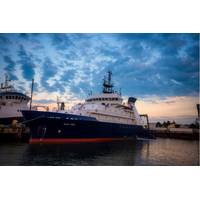
RV Sally Ride Enters Dry Dock for Maintenance
The Sally Ride, a Neil Armstrong Class Auxiliary General Oceanographic Research (AGOR) vessel, dry docked at Bay Ship and Yacht on April 15, 2017, to carry out modifications to superstructure and to perform general vessel maintenance. Named for the late astronaut Sally Ride, the ship is 238 feet long and incorporates the latest technologies, including high-efficiency diesel engines, emissions controls for stack gases, and new information technology tools both for monitoring shipboard systems and for communicating with the world. It will serve to provide scientists with the tools and capabilities

Interview: Margaret Leinen - Director, Scripps Institution of Oceanography
and non-profit work. The Scripps Nimitz Marine Facility in San Diego’s Point Loma community is the home base for our oceangoing research vessels and a major contributor to the maritime community. It’s a bustling hub of seagoing activity. Last year we welcomed home research vessel Sally Ride, the newest ship in the U.S. academic fleet. All of this activity and participation in the Blue Tech cluster provides a forum for collaboration with industry for our mutual benefit. Put in perspective how the public knowledge and perception of “the ocean” has changed over
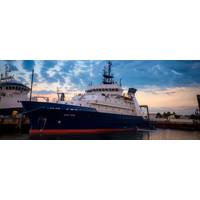
New Research Ship Sally Ride Sails for Home
On August 26, 2016, R/V Sally Ride will arrive from its shipyard birthplace in Anacortes, Wash., via a stop in San Francisco, to its home port at the Scripps Nimitz Marine Facility in Point Loma. The ship is owned by the U.S. Navy and operated by Scripps Institution of Oceanography at UC San Diego—one of the world’s most renowned ocean, atmosphere, and earth system research centers. R/V Sally Ride is one of the world’s most technologically advanced oceanographic research vessels and will put that technology to work in missions throughout the northern Pacific Ocean. With it
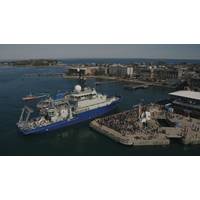
RV Neil Armstrong Arrives in Woods Hole
two ships in a new Ocean Class of research vessels and in 2010, awarded WHOI the no-cost lease to operate the first of the ships. Two years later, the Navy announced the first ship would be named Neil Armstrong and its sister ship, to be operated by Scripps Institution of Oceanography, would be named Sally Ride. The 238-ft. Neil Armstrong is the newest ship in the U.S. academic fleet, and one of just seven in that fleet capable of accessing all but ice-covered areas of the global ocean. In his remarks, Abbott also noted WHOI’s long history with the Office of Naval Research (ONR) and the


 February 2024
February 2024





